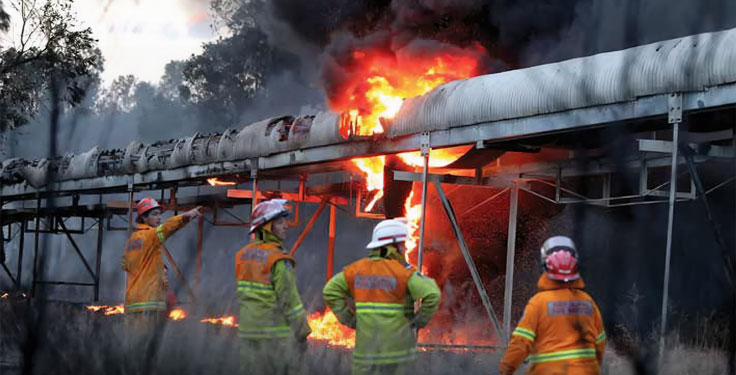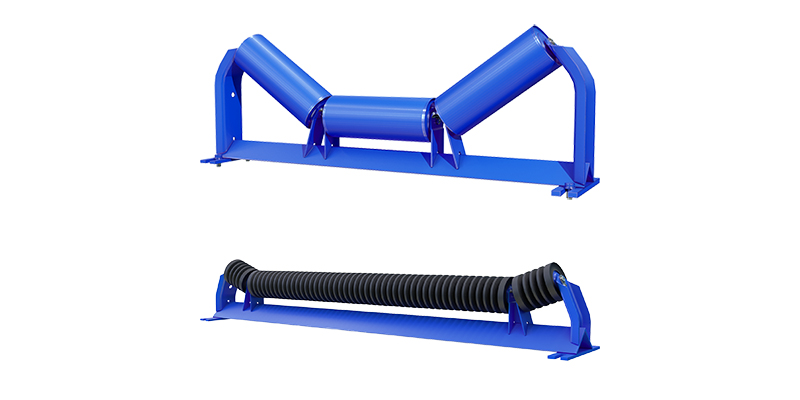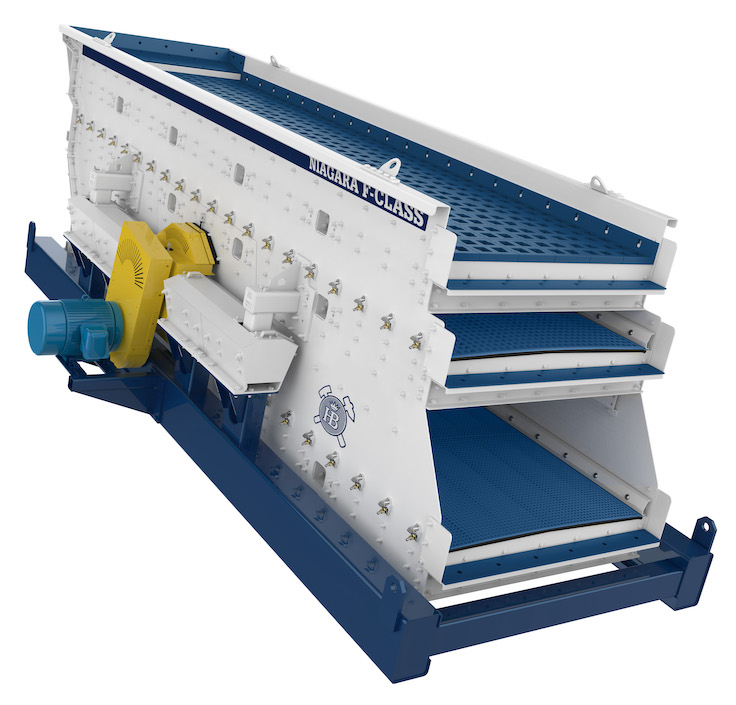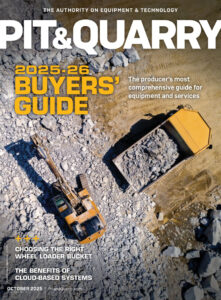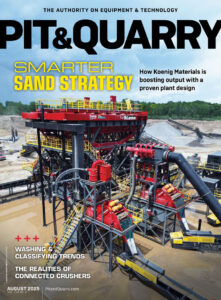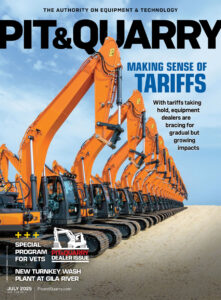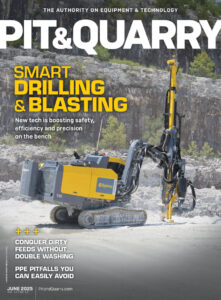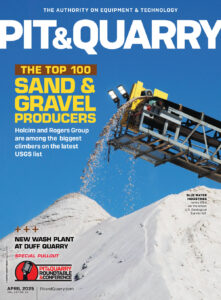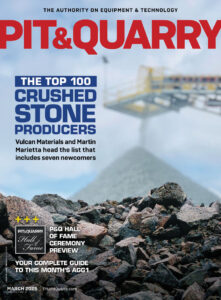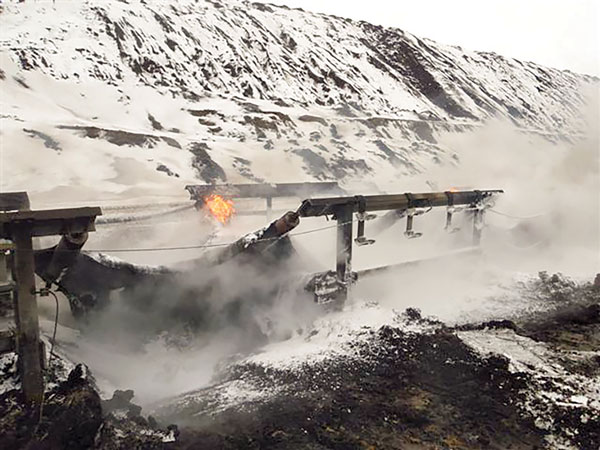
Often, the potential return on investment for prevention equipment isn’t recognized until managers inspect burnt rubble and negotiate with insurance adjusters.
Still, safety-minded operators understand that the same equipment they implement for increased efficiency, including belt cleaners and impact cradles, can help to prevent fires.
• Impact cradles and support cradles.These help to reduce fugitive material by providing a flat, stable belt surface that facilitates effective sealing.
• Transfer chute design. This is a critical element of fugitive material control, with sufficient settling zones and confinement. New raised chute designs also allow for external wear liners that eliminate the need for confined space entry or torch removal. When paired with improved skirt seal designs, fugitive spillage and dust emissions are drastically reduced.
• Modern belt trackers. These detect mistracking and correct the belt path immediately using troughed idlers or gripping return idlers.
• A heavy-duty belt cleaner system. One featuring modern primary and secondary cleaners with an effective tensioner increases the volume of discharge and limits the amount of carryback and fugitive dust. Along with limiting spillage, tail pulley health is improved and there is less fouling of rolling components.
Conclusion
Operators should regularly contain airborne dust at transfer points and remove accumulation. Damaged rollers must be replaced promptly.
Conveyor belt alignment is also an essential prerequisite to belt safety. Consider using flame-resistant grease and other lubricants. Fire detection and suppression systems must be tested in accordance with regulatory standards.
Experience has shown that clean conveyor systems and ongoing maintenance form the best defense against fire.
Related: Keys to successful component selection
Daniel Marshall is process engineer at Martin Engineering.

